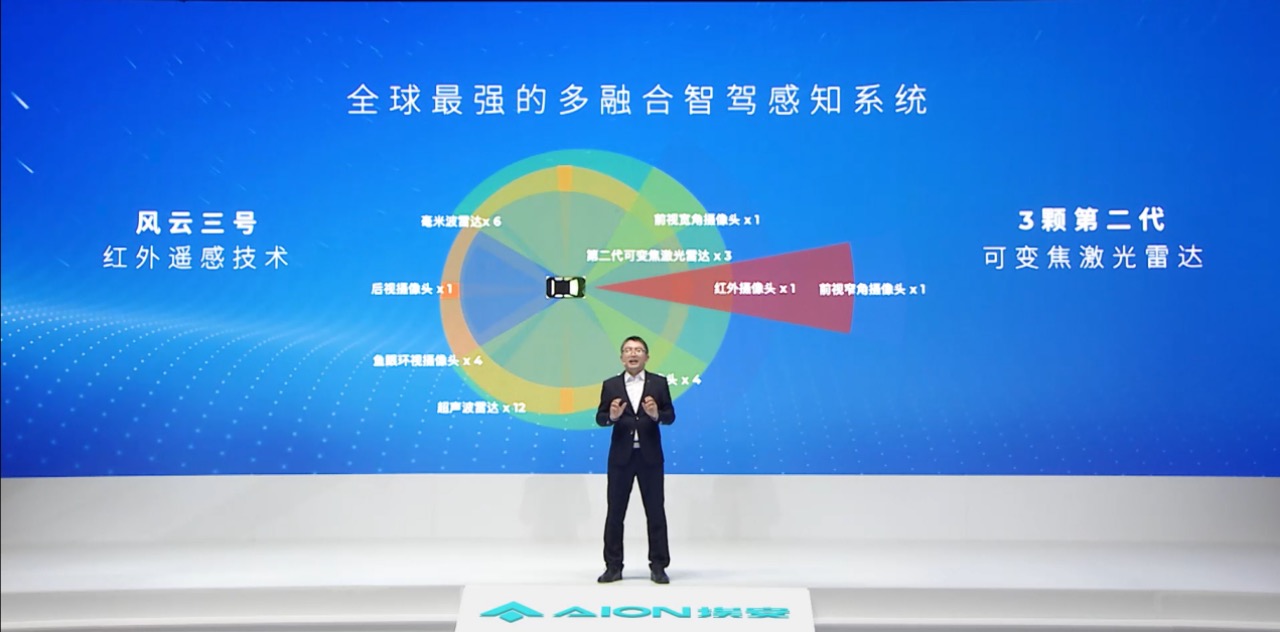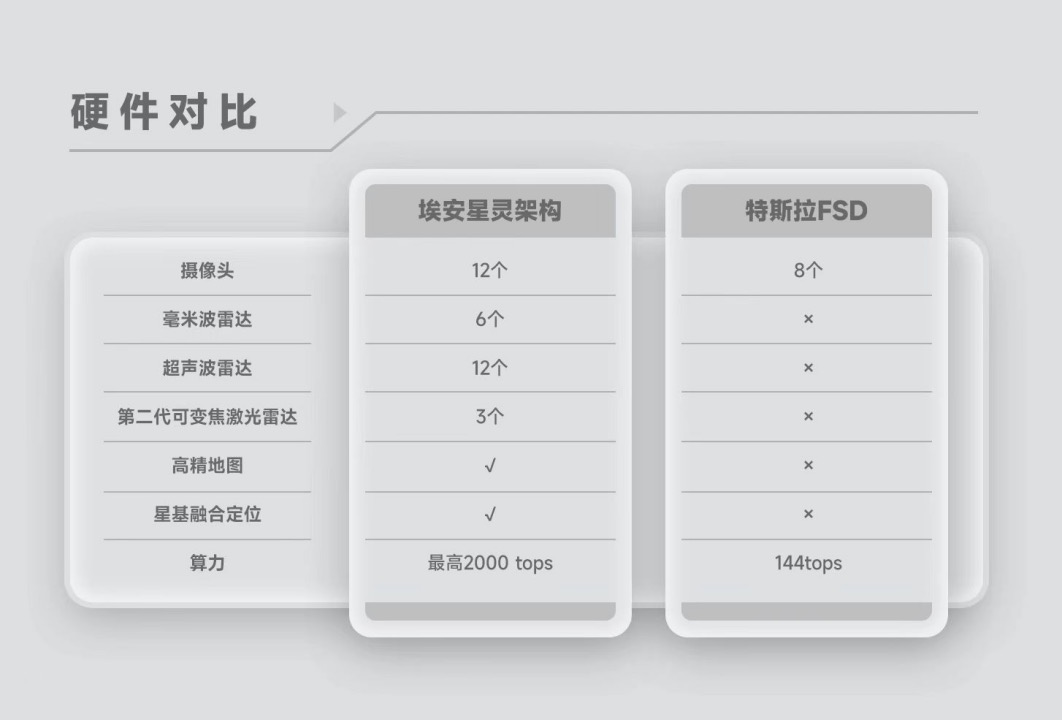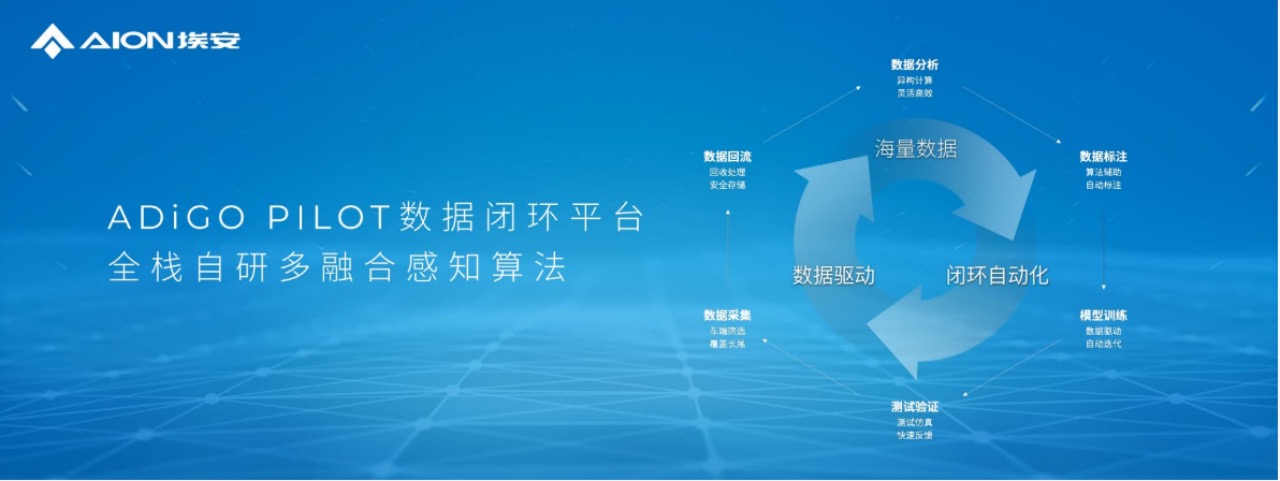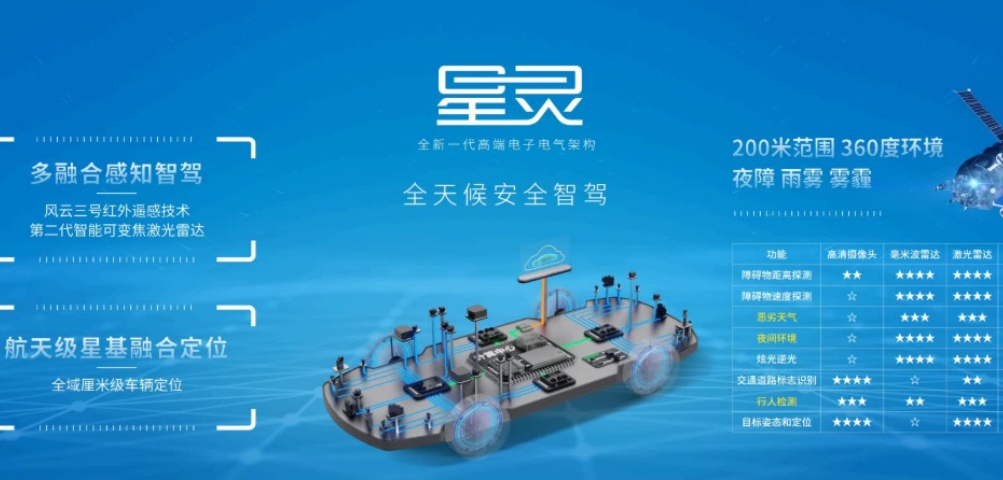On the evening of November 8th, E-An officially released the new generation of electronic and electrical architecture – Star Architecture.
Based on the Star Architecture, E-An has developed ADiGO PILOT for smart driving and ADiGO SPACE for smart cockpit systems.

In terms of intelligent driving, the Star Architecture will adopt a multi-sensor fusion solution, including 12 cameras, 6 millimeter-wave radars, 12 ultrasonic radars, and 3 lidars. At the same time, the vehicle will use high-precision map data, and the computing power can be extended up to 2,000 TOPS.

E-An particularly emphasized the scalability and richness of the Star Architecture on the hardware side, and even compared this architecture with Tesla’s FSD. This is not an isolated case. Many car companies that adopt a multi-sensor fusion route will compare themselves with Tesla, which uses a single sensor. However, it is not just about stacking hardware high, and software capability is also very important for determining the performance of the system. The capability of smart driving still needs to be measured by the mass production of functions and landing experience.
In addition, the press conference also mentioned that this system will be equipped with the second-generation intelligent varifocal lidar. Although the specific model was not mentioned, E-An’s lidar supplier has always been Velodyne, and E-An’s LX PLUS is also equipped with Velodyne’s M1. Therefore, the lidar used by the Star Architecture is likely to be Velodyne’s upcoming M1 Plus.Here’s the English Markdown text:
In addition, EHang claims to have created the ADiGO PILOT data loop platform, which has already undergone perception training and simulation verification of tens of millions of images. As we all know, the progress of intelligent driving relies on the training of large amounts of data and the iteration of software. We look forward to the specific function performance brought by the software and hardware capabilities of EHang’s new platform.

Finally, let’s take a look at a group of data. EHang claims to have built an ICV full-stack self-developed team led by more than ten leading talents, including Chen Xuewen and Jiang Jianshan. There are more than 2,000 software developers upstream and downstream in this team.
This article is a translation by ChatGPT of a Chinese report from 42HOW. If you have any questions about it, please email bd@42how.com.
